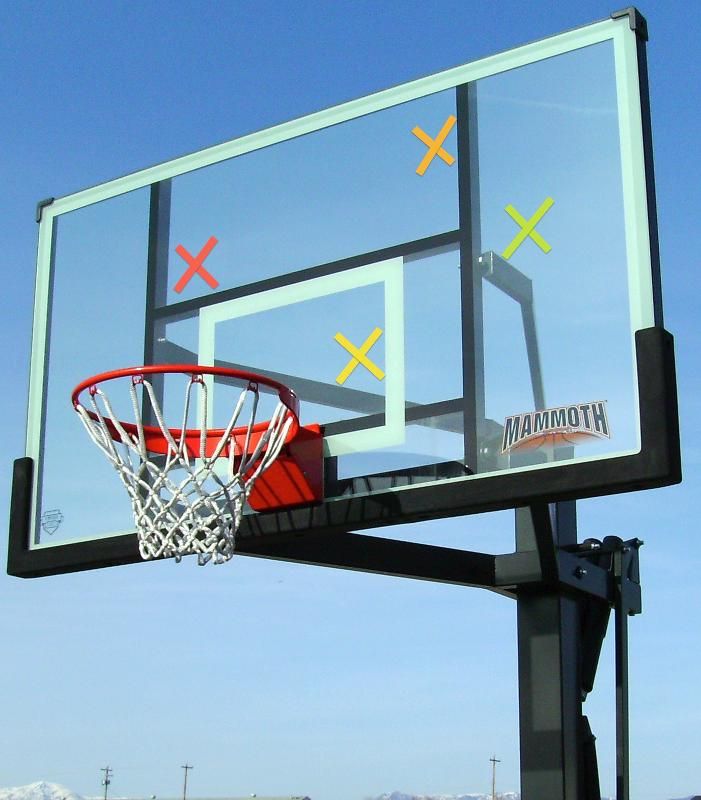Home »
Misc »
How to install a basketball net
How to install a basketball net
How to Put on Basketball Net (8-Step Guide with Pictures)
Is it time to replace the net on your basketball hoop? If you have a basic nylon net and you’re one of those sharp shooters who get nothing-but-net, you may find that your net wears out quickly. Even if you have a tougher rope type net, like you see in the NBA or NCAA, eventually it is going to wear out, especially if you have an outdoor hoop.
Even if it is not worn out, it may start to get dirty and dingy looking, or you may just want to change your aesthetic by getting a net that is a different color, design or type.
Quick Navigation
Why Do I Need a Basketball Net?
Some may think that a net is a trivial part of a basketball hoop, but it is, in fact, a very important part of the game and your hoop. Have you ever tried playing without one? If you haven’t, give it a try and you will see the difference immediately.
The ball is slowed down as it goes through the net. Photo by Melissa Medina.![]()
See the net slows the ball down after it goes through the hoop. An important effect that allows us to see that a basket has definitely been made. Without it, it can sometimes be very hard to see if the ball actually went through. The speed of the ball can sometimes trick the eye, and if the ball does not contact the rim it can make it really hard to tell.
My Personal Experience
I’ve had to play quite a few times without a net. Whether it was at a public court, where the net was just gone, or at my own court where it wore out during a game and we didn’t want to stop to go to the store to get a new one.
In any case, it’s just not the same, playing without a net. Shooting those long 3 pointers and not hearing the swish sound, can be very disappointing. The net really does give that extra feeling when you make a shot. Without a net, there is just something missing.
Very Important!
Replacing a basketball net will most likely involve you getting up on a ladder. Please be cautious and make sure your ladder is on stable ground and that you do not stand on the top step or rung of the ladder. If possible, get a helper to hold the ladder steady for you.
Please be cautious and make sure your ladder is on stable ground and that you do not stand on the top step or rung of the ladder. If possible, get a helper to hold the ladder steady for you.
Don’t have a ladder at home? You can get one from Amazon.
Resources You’ll Need
- A new basketball net (like this or this).
- A step ladder.
- A helper.
- A pair of scissors (like this).
How to Put on a Basketball Net: A Step-by-Step Guide
The following are general instructions for putting on a basketball net. These instructions are for a standard regulation basketball net and rim.
Step 1: Set up your ladder.
If you have an adjustable hoop, it might be best to lower it as low as you can. Once you lower it, make sure that it is secured. If it goes low enough, you may not need a ladder, but it can still make the job much easier. Set up your ladder up so that it is centered under the front of the rim.
Center the ladder under the hoop.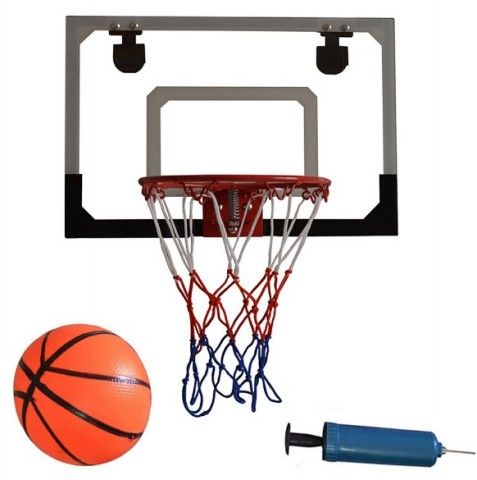
Step 2: Remove the old net.
If the old net is still on the rim, you will need to remove it first. Carefully climb the ladder and have your helper hand the scissors to you once you are stable and in a comfortable place. Carefully cut each loop near the rim and pull the remaining parts of the net out of the hooks on the rim.
Cut the net.
Step 3: Figure out which side of the net to attach to the rim.
Have your helper hand the net to you, so you can start attaching it to the rim. If you can’t tell which side of the net to attach. Look at the net. The end with the longer loops, will be the end that you attach to the rim.
Long loops on net.
Step 4: Push the net loop through the rim hook.
Grab one of the long net loops and hold it between your index finger and thumb. Squeeze it so that you can push it through the rim hook from the inside of the rim to the outside of the rim.
Push the net loop through the rim hook.
Step 5: Attach the net loop to the rim hook
Open up the net loop enough that you can loop it around the front of the rim hook. Hold it in place with one hand and with your other hand, firmly pull the net loop from the inside of the rim, so that the loop tightens firmly in the rim hook.
Attach the net loop to the rim hook.
Step 6: Hook the remaining net loops to the remaining rim hooks.
Repeat steps 4 and 5 for the remaining net loops and rim hooks. There are 12 hooks on a standard rim, so you should have 11 more to go. Make sure that you don’t skip any loops or hooks. Also, make sure that you keep the net loops straight and do not get them entangled with the other loops. If so, you may need to remove the entangled loops and re-attach them.
Step 7: Pull the net tight.
Grab the bottom of the net and firmly pull it downward to ensure all the loops are attached and to stretch and straighten the net out a little.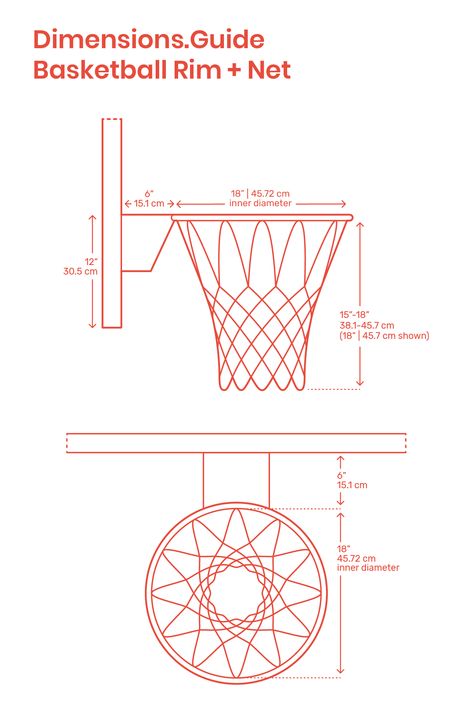
Pull the net tight.
Step 8: Play ball.
Start shooting some hoops and have fun playing basketball with your new net.
Final Words
Having a net on your basketball hoop is an important part of being able to enjoy the game. You can replace your net with a good heavy-duty net, or you can go with one that adds some color to your hoop.
Whatever you choose, replacing your net is fairly simple, so don’t hesitate to replace it whenever it starts to feel worn or you just want to give new life to your hoop.
How to Replace the Net on a Basketball Hoop
Written By: Kevin A Walker (and 6 other contributors)
- Favorites: 0
- Completions: 3
Difficulty
Very easy
Steps
5
Time Required
10 minutes
Sections
1
Flags
0
- BackSporting Goods
- Full Screen
- Options
- History
-
- Download PDF
- Edit
- Translate
-
- Embed This Guide
-
Introduction
If you have an old basketball net that needs replacing, check out this guide!
No tools specified.
-
Edit
-
-
Loop the first net loop through the basketball rim.
-
Push the net through each loop on the basketball rim.
-
Pull the net loop down and spread the rope across the rim coil as shown
-
Pull the net tightly to the rim.
Edit
-
-
Edit
-
Edit
-
Edit
Almost done!
Now that you've replaced your net, you're ready play some basketball.
Conclusion
Now that you've replaced your net, you're ready play some basketball.
Cancel: I did not complete this guide.
3 other people completed this guide.
Author
with 6 other contributors
Badges: 8
+5 more badges
Team
90,000 how to connect a basketball grid - Structure Review
Content
- My first book
- Spartakiad (Odintsovo District)
- Physical Culture 2018
-
- Physical Culture 2017
-
-
- 9000 9000 9000 9000 9000 9000 9000 education
- Documents for CERTIFICATION
- Home > Document
- App.
 Magazine Young Technician No. 5-84g.
Magazine Young Technician No. 5-84g. - Drawings by E. ORLOV
- BADMINTON DAY NET
- BASKETBALL NET
- SQUARE CELL NET
When I enter the sports halls of the district and region schools, I often pay attention to the poor condition of the basketball nets or the lack of basketball nets. “It seems that a year ago they hung new nets, but now they are barely “breathing”!” - so, usually, physical education teachers say. After all, I'm right! Is not it? I solved this problem for myself 5 years ago.
At that time, I was very dissatisfied with the quality of the basketball nets I bought in the store. And, without hesitation, I bought a rope in a hardware store and wove my first basketball net. I had to work a little and experiment so that it turned out to be beautiful, durable and correct. To my surprise and joy, having made 6 nets 5 years ago, I hung them on basketball hoops in my school gym and ... they are still like new (note that students play basketball in the gym every day)!
Today I want to bring to your attention a master class on making a net for a basketball hoop. What is needed for this: a nylon rope (household cord) 20 meters long (5 mm in diameter), a thin metal cable 160 cm and a template (a bar with five nails driven in without hats as shown in the picture).
What is needed for this: a nylon rope (household cord) 20 meters long (5 mm in diameter), a thin metal cable 160 cm and a template (a bar with five nails driven in without hats as shown in the picture).
So, let's get to work:
- Cut the rope into 12 equal pieces (160 cm each). Melt all ends of the ropes (so that they do not fray over time) using matches or a lighter.
- Each piece of rope is folded in half.
- Take one piece, loop over the nail and tie a knot (see photo) after 100 mm. The node is called a "simple conductor". By the way, all subsequent knots are knitted in this way.
- Carry out the same steps as in point 3 with the remaining 11 pieces of rope.
- The next step is to link 12 blanks together (see photo).
- Tie the ends of the ropes together last when 5 rows have been completed.
5 rows of woven mesh is sufficient. I gave the optimal rope sizes and cell sizes between the knots. A thin metal cable 160 cm is designed to be attached to the ring. A basketball flying into a ring with such a net is slightly delayed (by 0.5 - 1 second) and falls to the floor. Visual effect of slow motion. Just CLASS. Try it and you won't regret it! I spent no more than two hours on weaving one net. Wish you success!
A thin metal cable 160 cm is designed to be attached to the ring. A basketball flying into a ring with such a net is slightly delayed (by 0.5 - 1 second) and falls to the floor. Visual effect of slow motion. Just CLASS. Try it and you won't regret it! I spent no more than two hours on weaving one net. Wish you success!
P.S. The net is attached to the basketball hoop with a cable or rope. To do this, the cable is threaded through the ears of the ring and mesh loops and its two ends are connected with a clamp. In my gym, I used to use not a cable, but a rope (see photo). However, practice shows that the cable is more reliable and durable.
Vyacheslav May 24, 2014 12:57 pm
Thank you. I'm trying to build one for myself.
Valery Pavlovich, more articles like this. Young teachers need your experience and your wisdom.
Vyacheslav, a little advice: for the first time, take the pieces of rope a little longer, that is, not 160 cm, but 170-180 cm.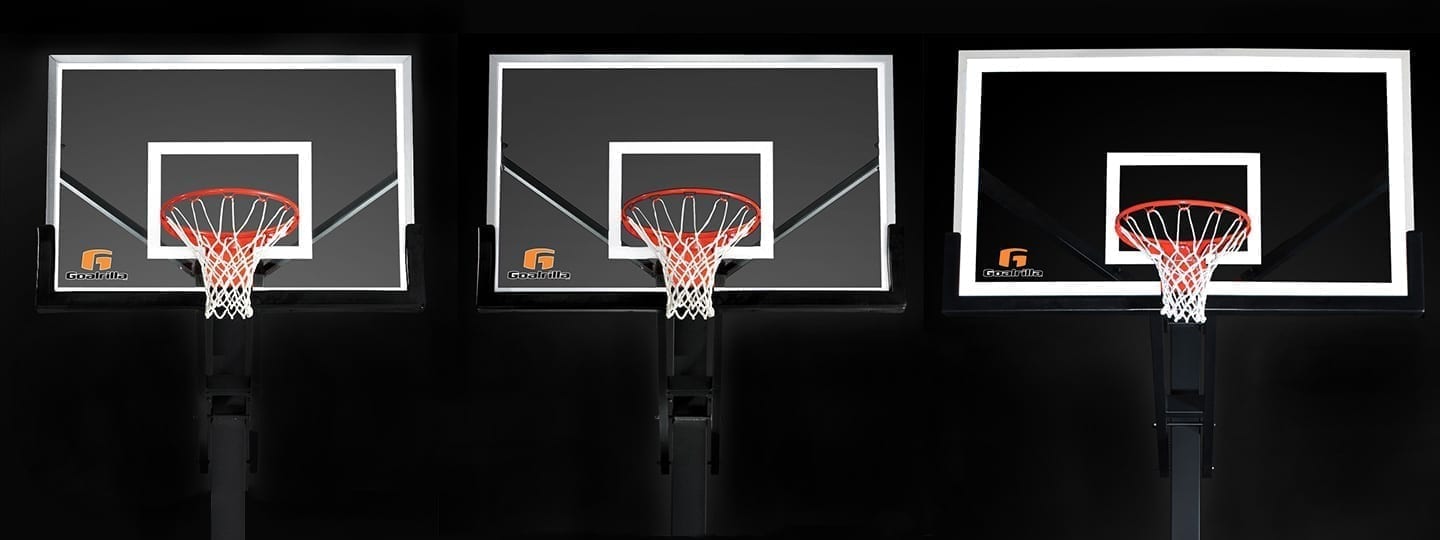
Attach the net to the ring with a rope and a clamp. I'll take a photo and post it.
Then the length of the cable should be 160 cm, and not as you indicated 160 mm
Thank you for the article and the answers.
You're right, I'll correct the typo now. The rope should be 160 cm.
So, a little epic about my first woven mesh.
Of course, I could not miss the chance to knit such a wonderful net, but for some reason this event was constantly postponed until later. But with a strong-willed decision, I overcame myself and went to the store for a rope.
As a graduate of Physics and Mathematics, I calculated that with a rope length of 165cm (yes, I decided to risk 8)) two skeins of 20m each would be enough for me for 2 nets. What was my surprise when a skein of "20 meters" was enough for me only for 9 segments
Advice to everyone who is going to repeat the experiment: count that there are no more than 16 meters in a skein.
I made the weaving device in 5 minutes, after which I wove the mesh in 40 minutes (of which a third of the time was spent on the last sections, as the mesh was constantly tangled).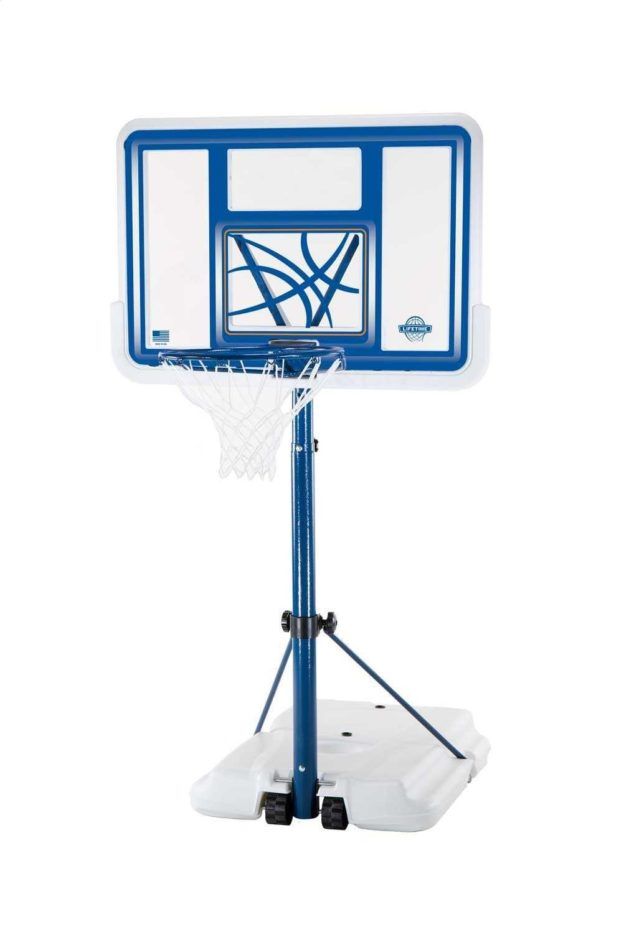
A little later I will attach the nets to the ring and write what the average cost of each set is.
Vyacheslav, I am glad for your success! You are right that in one skein there are not 20 meters, but much less.
Advice: when I wove the mesh, I tighten each knot until after the completion of all the work, that is, when I attached it to the ring. Why am I doing this? During the test (by throwing the basketball), the ball may not fall out of the net. That's when I tighten the first loops in particular (that is, expand). I like it when the ball gets stuck in the net for a split second.
Thank you very much. Everything is described in an accessible way, and with the photo it was very easy for me to create a grid for my son. By the way, I experimented with colored ropes. Vishlo very cool and original. Thank you Valery!
I am glad that my article was useful to you in practice, Roman! Thank you. for a simple visual way. By the way, I also like it, the delay of the ball in the net for a fraction of a second.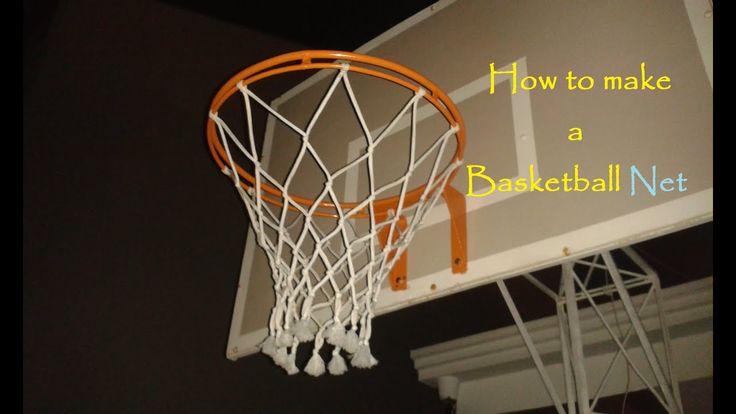 I think to weave another one, but take from the second knot not 5 cm, but 4 cm (from 5 cm it passes freely).
I think to weave another one, but take from the second knot not 5 cm, but 4 cm (from 5 cm it passes freely).
Maybe I made a mistake, not 4 cm, but 6 cm! I'll try.
Thank you, great article)
I am glad that the article was useful to you!
Good afternoon! Please tell me what is the distance between the carnations horizontally. And how to finish weaving? Thank you.
Horizontal distance between nails approx. 25 - 30 mm.
6 rows of mesh is enough. As you tied the 6th row, align the ends with scissors and singe them with matches or a lighter.
Good afternoon Valery! Thank you very much for the answer. I probably did not express myself correctly!? “Finish weaving” I meant how to connect this weaving to each other (the first and twelfth laces). Thank you very much, I couldn't find a better description.
Vitaly, there is an answer to your question: you need to complete the circle of weaving by tying the first and twelfth laces.
The Soviet ring needs 11 pieces of 180 cm each. There are 11 fastening loops, there are also 11 gaps, respectively.
There are 11 fastening loops, there are also 11 gaps, respectively.
Valery, thank you very much for a simple and reliable recipe! I wish there were more people like you. you look and life would get better, and the children would be healthier!
Thank you for your positive feedback! I love it when my experience comes in handy for you!
Thank you very much, everything worked out!
These nets are actually very durable.
Good afternoon! Tell me, how to narrow the size of the outlet? It turned out to be a big cadet for me. I have not hung the net yet, but the ball passes and there is still a gap between the net and the ball of 5 cm. Is this normal?
I left too much space horizontally on the template, it looks like I have 5 cm between them
If you reduce the distance between the nodes a little, then all problems will be solved. Read the comments above and everything will become clear. By the way, if the ball freely passes through the net, then this is not bad. so it should be.
so it should be.
Leave a comment or two
Please register to comment.
[email protected]
Home > Document
| Document Information |
| Date added: |
| Size: |
| Available formats for download: | |
How to crochet a net for basketball hoops.
Mortin Vladimir Nikolaevich,
MBOU "Murikovskaya secondary school"
In order to tie a net for basketball hoops, you will need 21 meters of nylon cord or rope and a template. To make a template, you need to take a wooden block 50mm / 50mm in cross section, 400 mm long and 4 nails per 100 without hats (bit off the hats or saw off with a hacksaw). Mark the bar: 170mm, 110mm, 50mm, 50mm. Drive nails into the bar according to the markup. (see photo)
The markings on the template are designed for knitting with cord or rope 5 mm thick or thinner.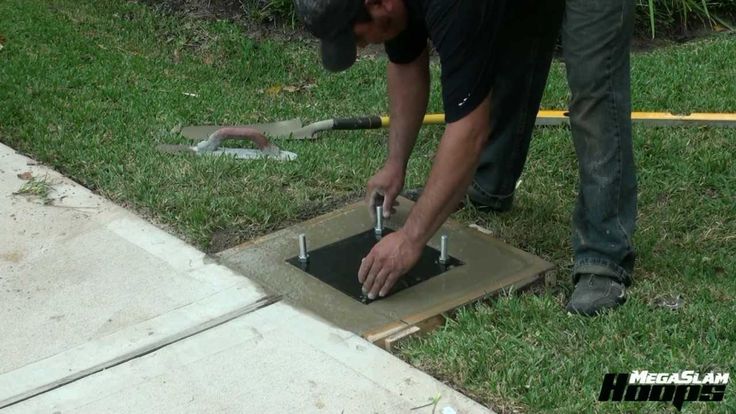
Step by step:
Make 12 pieces of rope 1700 mm long. To prevent the ends of the rope from fraying, they need to be melted over a fire. We take one piece (blank), fold it in half, put it on a nail on a template with a marking of 170 mm and on the side where there is one nail (it’s more convenient to tie a knot). (see photo)
Knit knots in such a way that the loops on the nails are stretched, and since the nails are without hats, the loops will be easy to remove.
Thus, we make 12 blanks with loops. With these loops we will hook the finished net to the basketball hoop.
Further, these blanks are connected to each other in a circle. We first take 2 workpieces, put them on the loops on the nail, which is located on the template with a marking of 170 mm, one on the right side, so that one workpiece is a loop, knot and ends on the right side of the rest of the nails on the markup, and the other on the left. (Make sure that the loops and ends are not twisted).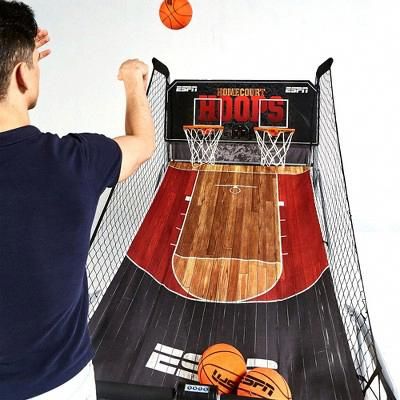 We connect the two ends that are closer to the nail, pulling the rope so that the first knots on the workpieces are in the center of the 50 mm markup. (See photo.)
We connect the two ends that are closer to the nail, pulling the rope so that the first knots on the workpieces are in the center of the 50 mm markup. (See photo.)
So we move in a circle to the right or left side until all the blanks are connected to each other. Thus, on our grid, after two stages, we get two rows of nodes.
The third row of knots and subsequent ones are knitted in the same way: the knot of the first row is put on a nail with a 50 mm marking, which is in the center of the template, so that the two knots of the second row and the ends are one on the right side and the other on the left side of the nail , which is located in the center of the 50 mm markup. We knit knots of the third row. (see photo ).
The number of rows depends on the length of the pieces. From our blanks we get a grid of 7 rows.
App. Magazine Young Technician No. 5-84g.
Drawings by E.

ORLOV
BADMINTON NET
For this work you will need a shuttle and a template. You must make them yourself from a thin, well-dried plank.
The best shape for the shuttle is shown in picture 1 on the left. Nearby you see how to properly wind the cord on such a shuttle, from which the net is woven. Figure 1 on the right shows a simpler shape of the shuttle, much easier to make. But the first shuttle, of course, is more convenient for work.
A template is a small wooden ruler, its width should be 1.4 times less than the size of the grid cells. According to the rules, the mesh size for badminton is 2 cm. This means that the pattern in this case should be 1.4 cm wide. The length of the pattern is 20–30 cm. - 7 times the width. Both the shuttle and the template should be smooth, without burrs. Sand them thoroughly with fine sandpaper. The badminton net is dark in color, most often green, so that the white shuttlecock can be better seen against its background. A mesh is made of twisted twine with a thickness of 0.8 mm. For weaving larger sports nets - volleyball, football - a linen cord, cotton or synthetic, is suitable. Wind the twine or cord from the skeins into balls. Wind more cord around the shuttle, but so that the shuttle can easily pass into the mesh cells. As the cord is used up, you will wind a new one on the shuttle, connecting the ends with a marine knot (Fig. 2).
A mesh is made of twisted twine with a thickness of 0.8 mm. For weaving larger sports nets - volleyball, football - a linen cord, cotton or synthetic, is suitable. Wind the twine or cord from the skeins into balls. Wind more cord around the shuttle, but so that the shuttle can easily pass into the mesh cells. As the cord is used up, you will wind a new one on the shuttle, connecting the ends with a marine knot (Fig. 2).
There are several ways to weave netting. We offer you the simplest. A net woven in this way will have diamond-shaped meshes, while real volleyball, football and tennis nets will have square meshes. However, this is not so important for a friendly meeting of yard teams. For those who want to weave a grid according to the standard, we will tell you at the end how to get square cells.
Take a piece of rope 155 cm long and stretch it between two supports. Fasten the end of the cord to the rope with a knot, as shown in Figure 3. To do this, follow the pattern / course of the cord and repeat it with a shuttle. Now attach a template to the rope and wrap it around it with a cord, each time fixing the loop, as shown in Figure 4. After collecting 40 loops, take out the template and start weaving the cells of the first row. Lay the cord over the template (fig. 5a) and insert the shuttle from behind into the first loop of the base (fig. 56). Pull the cord so that the edge of the block touches the loop of the previous row. Once again, pull the cord over the template (fig. 5c) and press it with your thumb just where the cord kinks over the edge of the template. In figure 5c, the place where the thumb should be is indicated by a circle with a cross.
Now attach a template to the rope and wrap it around it with a cord, each time fixing the loop, as shown in Figure 4. After collecting 40 loops, take out the template and start weaving the cells of the first row. Lay the cord over the template (fig. 5a) and insert the shuttle from behind into the first loop of the base (fig. 56). Pull the cord so that the edge of the block touches the loop of the previous row. Once again, pull the cord over the template (fig. 5c) and press it with your thumb just where the cord kinks over the edge of the template. In figure 5c, the place where the thumb should be is indicated by a circle with a cross.
Now throw the cord with the shuttle to the left in a semicircle and drag the shuttle from right to left under the first loop of the base (Fig. 5d). Carefully tighten the knot without releasing your thumb (Fig. 5e). If you release your finger earlier, the node will shift and the mesh will be uneven. The first grid cell is ready. Continue like this until the end of the row, moving the template. It is more convenient to weave the net all the time in one direction, from left to right. But for this you need to turn the work over every time at the end of the row. Tie the ends of the rope on which the loops were typed with a sea knot and fasten it on a hook, nail, or tie it with a piece of cord to some support at a height convenient for work (Fig. 6).
It is more convenient to weave the net all the time in one direction, from left to right. But for this you need to turn the work over every time at the end of the row. Tie the ends of the rope on which the loops were typed with a sea knot and fasten it on a hook, nail, or tie it with a piece of cord to some support at a height convenient for work (Fig. 6).
When the mesh reaches the desired length, thread another 155 cm long rope into the cells of the last row and tie it into a loop with a sea knot. Two such ropes - at the beginning and at the end of the work - will limit the width of the grid, preventing it from stretching too much. The width of the finished badminton net is 76 cm, the length is 6 m.Yu cm. Thread two strong cords into the extreme cells along the length of the net on both sides, on which the net is stretched on two racks 155 cm high. Edge the edges of the net with strips of white cloth 7 cm wide In the same way, you can weave a volleyball net. Volleyball net width - 1m, length - 9m 50 cm.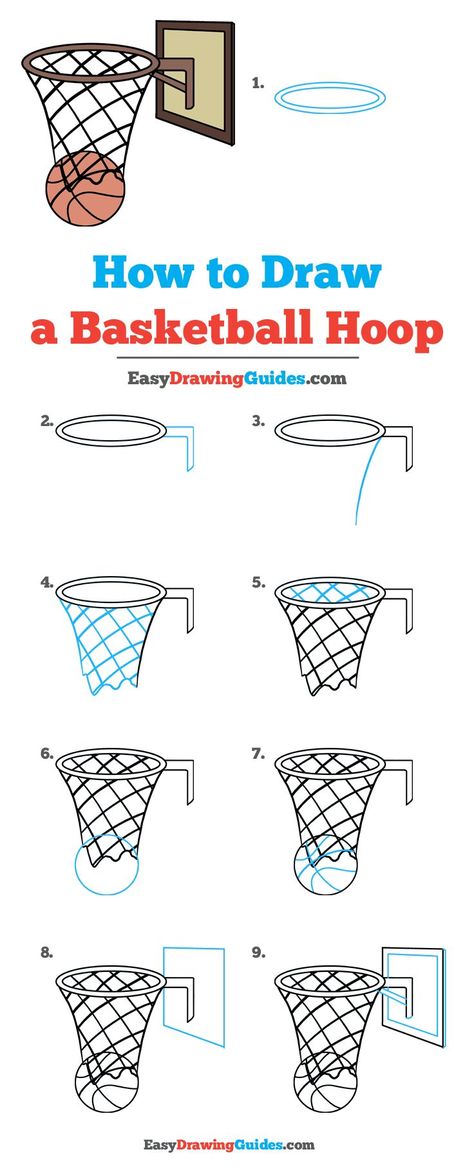 The tennis net has a length of 12 m 80 cm and a width of 91 cm. The football net is woven according to the size of the football goal: the height of the posts is 2.44 m, the length of the crossbar is 7.32 m.
The tennis net has a length of 12 m 80 cm and a width of 91 cm. The football net is woven according to the size of the football goal: the height of the posts is 2.44 m, the length of the crossbar is 7.32 m.
Cut the cord into lengths. The length of each piece should be 160 cm. The inner diameter of the metal ring of the basket is 45 cm, and it takes 35 such pieces to get a mesh with cells of 4 cm. First, fasten all the pieces of cord to the ring at regular intervals (4 cm ). To do this, fold each segment in half, put the fold on the edge of the ring and thread the ends of the segment through it (Fig. 7). Having fixed all the segments on the ring, begin to tie the ends of the segments of neighboring pairs with a sea knot (Fig. 8). To make the grid even, with the same cells, throw up a template (the width of the template in this case is 2 cm). When the mesh reaches a length of 40 cm, trim the ends of the segments, leaving a fringe of 5 - 6 cm.
In the same way, you can weave a mesh bag for a billiard pocket (fig.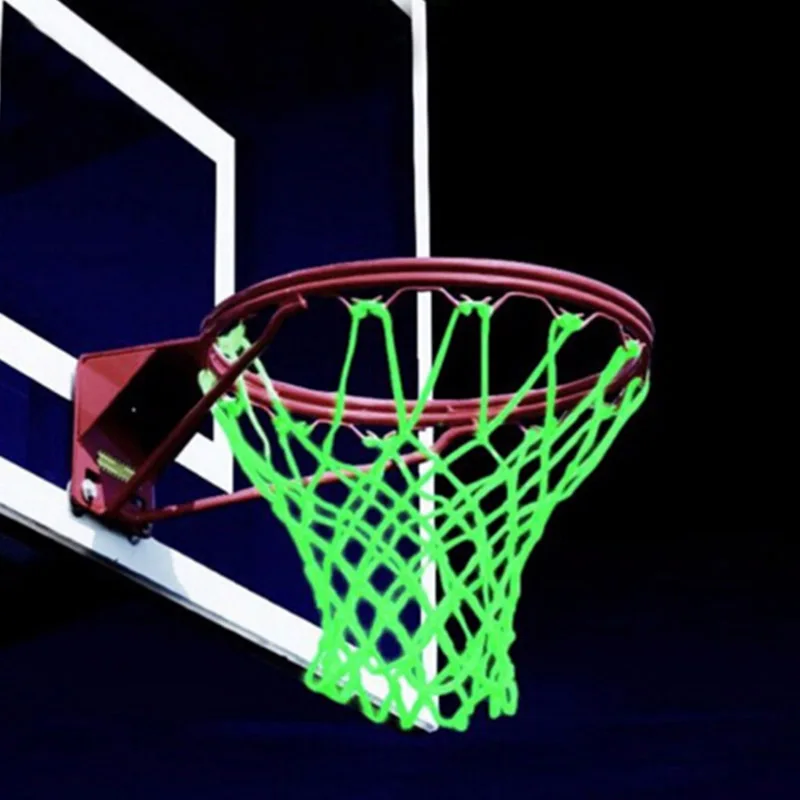 8). In this case, the free ends of the segments are tied at the bottom into one large knot. It is convenient to carry a ball or even several balls with you in a specially woven mesh (Fig. 9). You can make it from a thin cord or even from harsh threads. The net is woven in the same way as a basketball, on a wire ring with a diameter slightly larger than the size of the ball. The ends of the segments are tied into a knot at the bottom. Pull the cord through the first row of cells along the wire and tie its ends. Now take out the wire ring. The knots with which the pieces of cord were attached to the wire will unravel, and the cord will easily tighten the mesh.
8). In this case, the free ends of the segments are tied at the bottom into one large knot. It is convenient to carry a ball or even several balls with you in a specially woven mesh (Fig. 9). You can make it from a thin cord or even from harsh threads. The net is woven in the same way as a basketball, on a wire ring with a diameter slightly larger than the size of the ball. The ends of the segments are tied into a knot at the bottom. Pull the cord through the first row of cells along the wire and tie its ends. Now take out the wire ring. The knots with which the pieces of cord were attached to the wire will unravel, and the cord will easily tighten the mesh.
SQUARE MESH NET
If you need to weave square mesh, start at the corner (fig. 10).
To do this, make only one loop at the end of the cord using a template and fasten the end as shown in figure 10. In the same way as shown in figure 5, weave in each row one more loop than in the previous one. To do this, at the end of each row, make two loops on its last loop.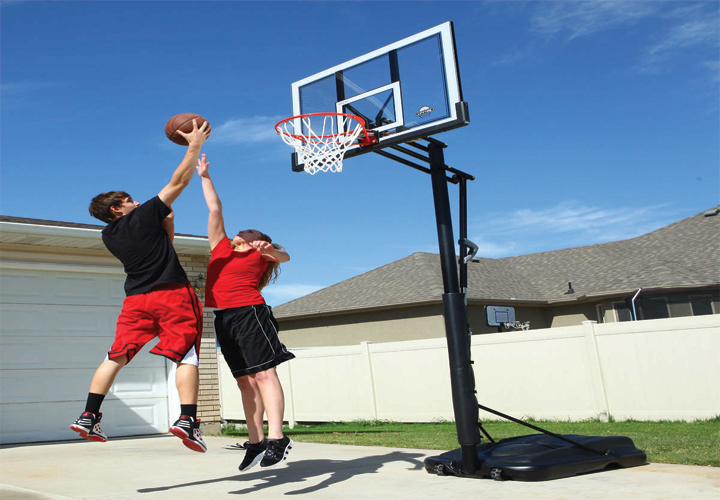 Weaving each new row, start with this additional loop - the last in the previous row and the first when turning the product. You will get a right triangle (Fig. 10). When the length of the legs becomes equal to the desired width of the mesh, continue to weave, each time adding a loop on one side and subtracting a loop on the other. To decrease at the end of every second row, connect two loops with one knot, introducing the shuttle into both loops at once.
Weaving each new row, start with this additional loop - the last in the previous row and the first when turning the product. You will get a right triangle (Fig. 10). When the length of the legs becomes equal to the desired width of the mesh, continue to weave, each time adding a loop on one side and subtracting a loop on the other. To decrease at the end of every second row, connect two loops with one knot, introducing the shuttle into both loops at once.
Weaving of such a mesh also ends at the corner. To do this, having reached the desired length on the longer side of the grid, decrease the loops in each row on both sides.
Basketball hoop - how to make a stand with a backboard with your own hands
Love basketball and want to make a hoop? I wanted to make it myself, not buy it, and I ended up making it. It's pretty cheap, especially if you have some of the stuff you need to assemble.
Let's start assembling the basketball hoop with our own hands.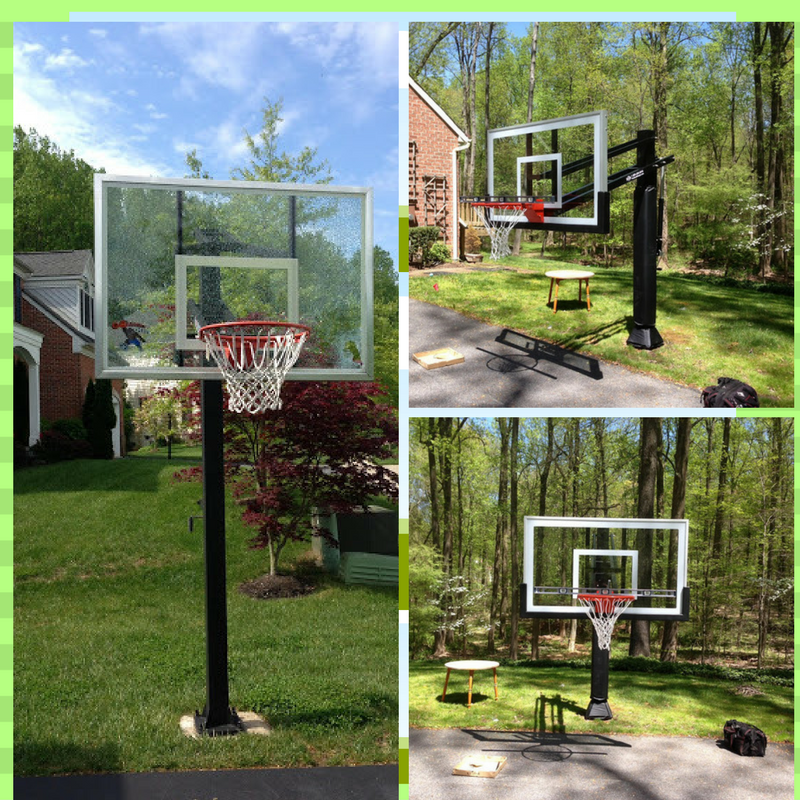
Step 1: Shape the ring
The first thing you need is a ring, I made it with 12mm rod, but it doesn't have to be that size. The standard diameter of a basketball hoop is 450 mm.
To make it flat you need something to wrap it around, this thing should be about 400mm in diameter.
I found an old car rim of the right size, you will need to clamp it to the table with a clamp using a block of wood.
As shown in photo 2, place another clamp a little further from the first with a rod in between.
As shown in photo 3, slowly wrap the rod around the disk, once you wrap the rod and its edges overlap, cut off the straight ends.
Use a clamp to press the ends together, then weld them together.
To complete this part, place the ring on the ground and straighten out all the curves.
Step 2: Frame
- Bend a piece of flat metal, mine was 4mm thick.
- Weld it to a flat point in the ring.
- Cut two rods 320 mm long.
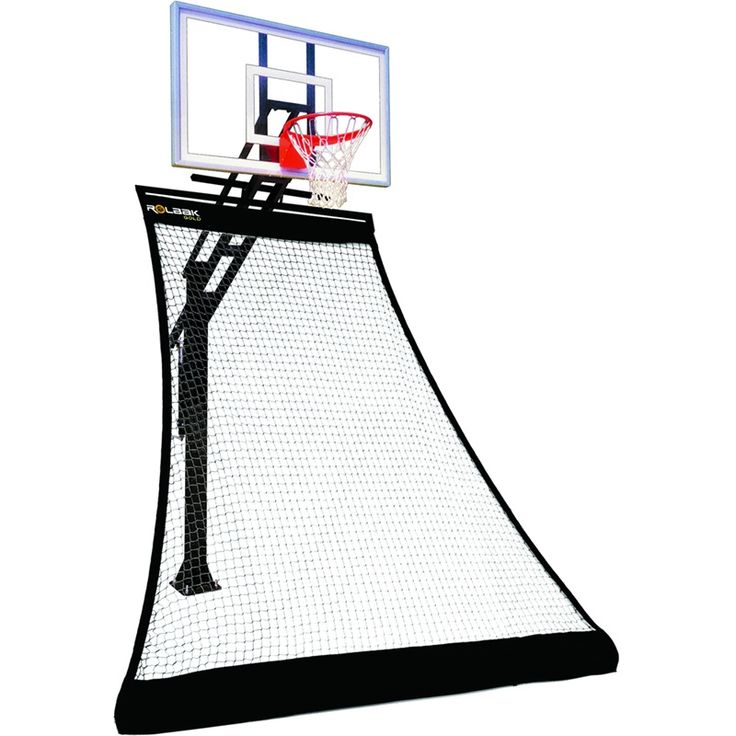
- Weld them as shown in the photo.
- Drill four holes to match your existing bolts.
- If you need a netball ring, you can simply attach it to the pole and skip the rest of the steps.
Step 3: Mesh Staples (Optional)
Show 7 more images
Do this step if you need mesh. If you need a network, you will have to buy it.
This step is not as difficult as it seems.
- cut 12 pieces of wire 90 mm long (I would recommend making a few spare parts, as they are easy to ruin.)
- bend them in the middle (it doesn't matter if the tips are the same length)
- clamp the wire in a vise with a steel rod at one end
- bend wire over rod
- repeat this with all parts of
- retighten the wire wrapped around the rod (see photo)
- bend it
- repeat with all parts
- retighten the wire wrapped around the rod
- bend it (at this point you can't just remove the wire from the rod - you will need to slide it to one of its edges and remove it from the edge)
- repeat with all parts of
- divide into 12 parts and weld on the brackets
Step 4: Backboard
Cut the board to size.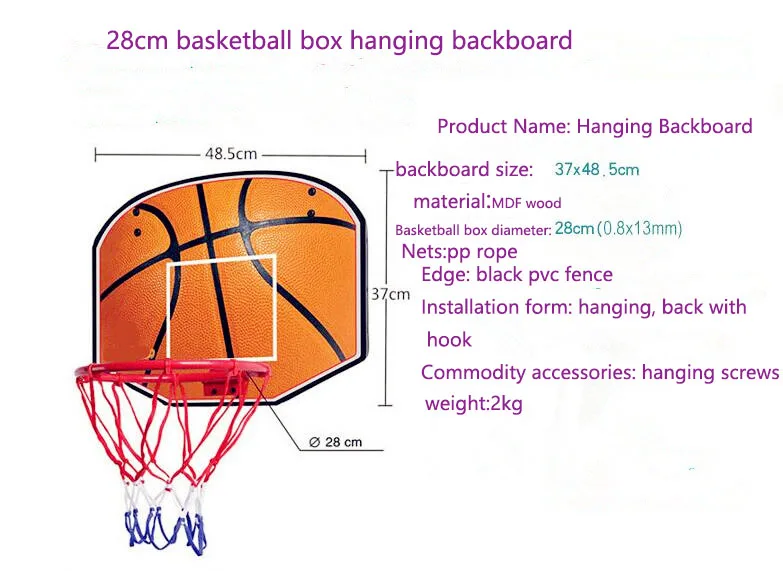 My board does not fit the full size of basketball boards. (the second picture shows the dimensions of a standard shield).
My board does not fit the full size of basketball boards. (the second picture shows the dimensions of a standard shield).
My measurements are 1100mm wide, 700mm high and 25mm thick. (You don't have to be that size.)
Step 5: Paint the shield
Once you've drawn all the lines on the shield, lay masking tape over them. If you try, everything will look neat.
If you are using MDF, you will need to take care to protect the edges from moisture (as shown in photo 2).
Carefully paint over the areas around the masking tape.
Remove masking tape after enough coats of paint have been applied and the board looks finished.
Step 6: Paint the ring
First you need to sand the metal. I used a grinding disc on a grinder.
The ring must not be black or white, it must stand out from the shield. Usually the ring is painted orange or red.
The easiest way to paint inventory is from a spray can.
Step 7: Assemble
Put it all together.